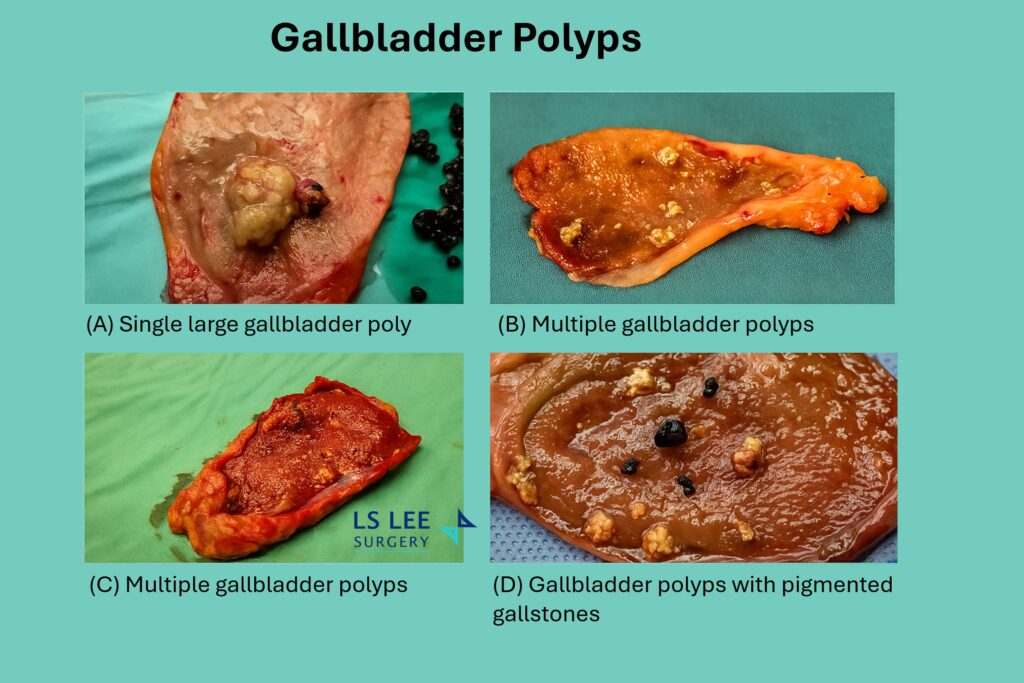Gallbladder Polyps in Singapore – Causes, Risks & Treatment Options
What Are Gallbladder Polyps?
Gallbladder polyps are abnormal tissue growths that develop along the inner lining of the gallbladder. These polyps are usually benign and are often discovered incidentally during routine imaging tests like an ultrasound. While most are harmless, a small percentage may carry a risk of turning cancerous.

There are different types of gallbladder polyps based on their composition:
- Cholesterol polyps (pseudopolyps) – most common, non-cancerous
- Inflammatory polyps – formed from chronic gallbladder inflammation
- Adenomyomas – benign thickening of the gallbladder wall
- Adenomas – true polyps with potential for malignancy
- Malignant polyps – rare, cancerous tumors
Are Gallbladder Polyps Dangerous?
Most gallbladder polyps are small and non-cancerous. However, some may require close monitoring or surgical removal if they show features linked to cancer risk. Risk factors include:
- Polyp size greater than 6 mm
- Patient age above 60 years
- Single polyp detected (as opposed to multiple polyps)
- Presence of gallstones or symptoms
Do Gallbladder Polyps Cause Symptoms?
In most cases, gallbladder polyps do not cause any symptoms and are found incidentally. However, in rare cases where polyps become malignant, symptoms may include:
- Persistent upper abdominal discomfort
- Unexplained weight loss
- Jaundice (yellowing of skin or eyes)
- Loss of appetite
- Fatigue or malaise
These symptoms often appear in later stages of gallbladder cancer, which is why regular monitoring is important.
Diagnosis of Gallbladder Polyps
Gallbladder polyps are typically identified through:
- Abdominal ultrasound (most common)
- CT or MRI scan for more detailed imaging
- Follow-up imaging every 6–12 months to monitor size changes
Treatment Options for Gallbladder Polyps
Observation (Monitoring)
Patients with polyps smaller than 6 mm and no symptoms are usually monitored with regular ultrasound scans to check for growth or changes.
Surgery – Laparoscopic Cholecystectomy
If the polyp is large, symptomatic, or has cancerous features, laparoscopic cholecystectomy is recommended. This is a minimally invasive surgery to remove the gallbladder and eliminate any risk of malignancy.
- Keyhole incisions for minimal scarring
- Fast recovery, most patients return home within 24 hours
- Definitive treatment to prevent gallbladder cancer
When Should You See a Specialist?
If an ultrasound reveals a gallbladder polyp, or if you have symptoms suggestive of gallbladder issues, it’s best to consult a gallbladder specialist. Early evaluation helps assess the risk and determine whether monitoring or surgery is needed.







